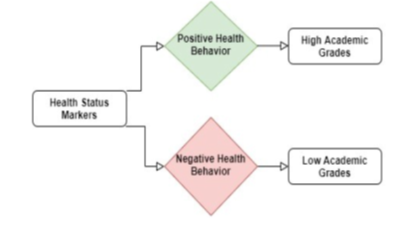


Indian Journal of Science and Technology
Year: 2020, Volume: 13, Issue: 29, Pages: 2947-2955
Original Article
Rabiu Muazu Musa1*, Muhammad Zuhaili Suhaimi1, Azlina Musa1,Mohamad Razali Abdullah2, Anwar P. P. Abdul Majeed3,Ahmad Bisyri Husin Musawi Maliki4
1Center for Fundamental and Continuing Education, Department of Credited Corecurriculum, Universiti Malaysia Terengganu Gong Badak, Kuala Nerus, 21030, Terengganu,Malaysia
2East Coast Environmental Research Institute, Universiti Sultan Zainal Abidin, 21300,Terengganu, Malaysia
3Innovative Manufacturing, Mechatronics and Sports Laboratory Faculty of Manufacturing & Mechatronics Engineering Technology Universiti Malaysia Pahang, Pekan, 26600, PahangDarul Makmur, Malaysia
4Faculty of Applied Social Sciences, Universiti Sultan Zainal Abidin, 21300, Terengganu,Malaysia
*Corresponding Author
Email:[email protected]
Received Date:25 June 2020, Accepted Date:29 July 2020, Published Date:11 August 2020
Background: A high level of wellness is vital to produce a well-balanced and competent graduate. Despite the importance of wellness to the attainment of high productivity, limited attention is directed towards predicting the academic performance of students with regards to wellness markers. This study aims to ascertain the association between wellness and academic achievement of undergraduate students. Methods: A total of 250 undergraduate students drawn from various faculties in one of the public universities in Malaysia participated in the study. The wellness Lifestyle inventory which evaluates an initial rating of a person’s present attempt to remain healthy and assessed nine major areas namely; health-related fitness, nutrition, avoiding chemical dependency, stress management, personal hygiene and health, disease prevention, emotional well-being, personal safety and environmental health protection was used as a tool for determining the wellness status of the students whilst their CGPA was utilized as a measure for their academic achievement. K-means clustering analysis was used to group the students into high grades students (HGS) and low grades students (LGS) through their CGPA. A Logistic Regression Model (LR) is developed to classify the students based on their wellness status markers. Findings: An excellent classification accuracy of 99 to 100 % was obtained from the LR model for both training and testing, respectively. Moreover, analysis of variance demonstrated that the HGS and LGS differ in their effort to stay healthy with respect to certain markers p <0.05. Applications: To ensure better academic grades, some wellness status elements need to be accentuated amongst undergraduate students.
Keywords: Wellness status; undergraduate student; academic performance;K-means clustering; logistic regression
© 2020 Musa et al.This is an open-access article distributed under the terms of the Creative Commons Attribution License, which permits unrestricted use, distribution, and reproduction in any medium, provided the original author and source are credited. Published By Indian Society for Education and Environment (iSee).
Subscribe now for latest articles and news.